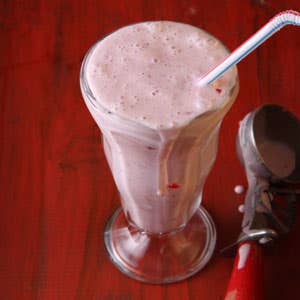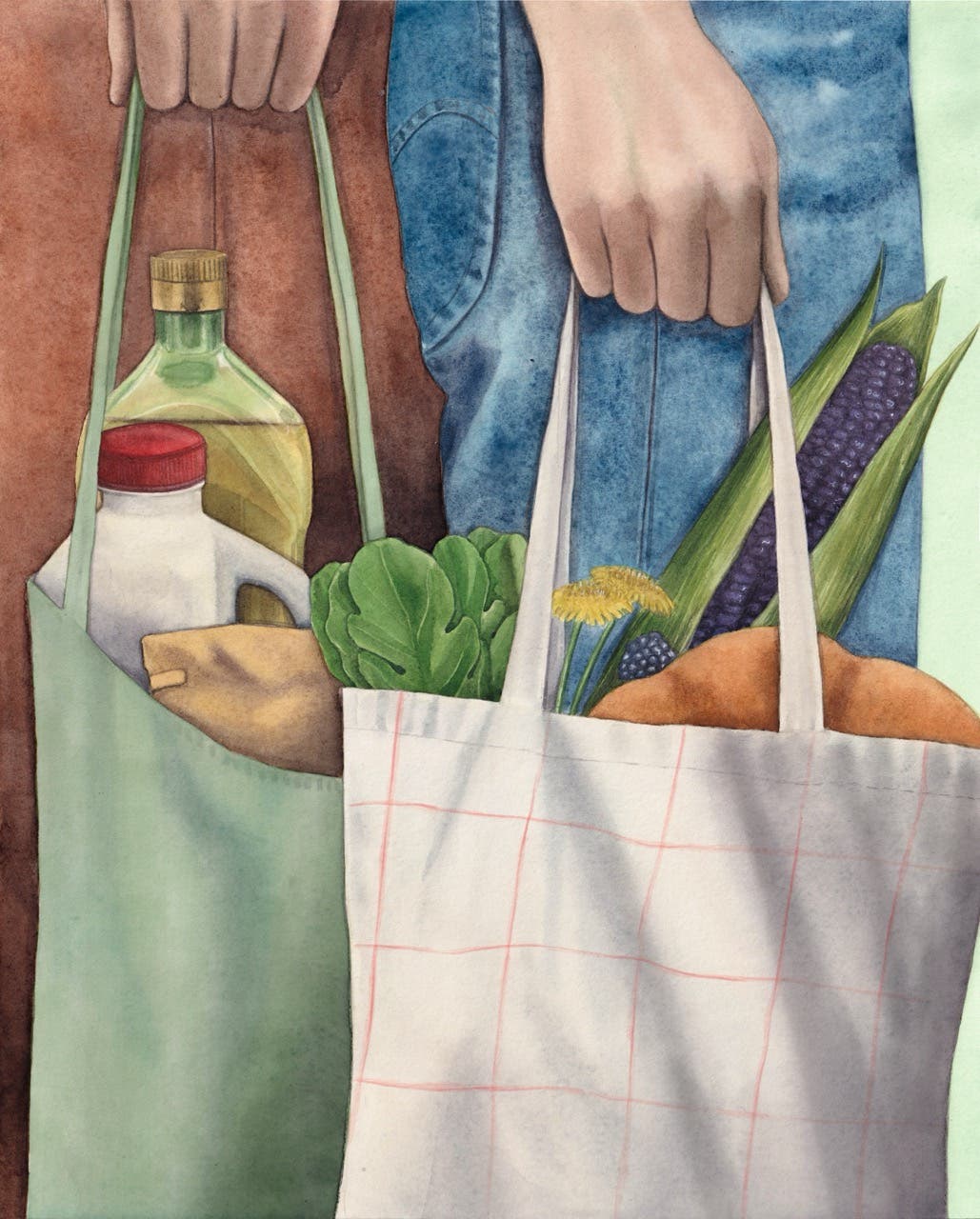
It had been too long since I'd had a good milk shake. When I was growing up in New England, I lived for those thick, creamy treats: the orange frosteds from the local Friendly's, sipped through two straws after a high-school dance; the root beer-spiked brown cows at the diner on Main Street; the frothy pink shakes my mother and I would whip up after a day of strawberry picking. But, like so many things that slip away with the passing of youth, my milk shake obsession gradually waned as I turned to more-mature refreshments. Then I came across a new book by a Boston-based writer and milk shake connoisseur named Adam Ried; it's called Thoroughly Modern Milkshakes (Norton, 2009), and it has caused my love of milk shakes to blossom anew.
Ried's book approaches the milk shake with an ardor usually reserved for more-highfalutin culinary subjects: there are sections devoted to the finer points of shake making (like adding jam to a fruit shake to boost flavor), equipment (he tested a dozen electric blenders), and farm-fresh ingredients ("Not many people think of milkshakes when they see a bin of cucumbers," Ried writes, "but maybe they should"). I delighted in finding recipes for old classics, like the chocolate and vanilla layered shake known as a black-and-white, as well as decidedly more-grown-up combinations, like coffee shakes spiked with star anise and cinnamon. There are also descriptions of milk shake traditions around the world, like the creamy avocado version popular across Asia. Thumbing through the milk shake history and lore made me realize that, having read all about burgers, barbecue, and other iconic American foods, I still had plenty to learn about the good old shake.
Like carbonated soda, that other fountain shop staple, the milk shake, in its early forms, was once more a tonic than a treat, Ried explains. During the Victorian era, restorative milk drinks—such as koumyss, a Mongolian fermented milk beverage—were all the rage at fashionable spas in England and America, and eventually drugstores started serving "healthful" blends of milk, shaved ice, and, often, whiskey. Indeed, in an old primer for druggists published in 1897 called The Standard Manual of Soda and Other Beverages, given to me by a friend who knew of my love of shakes, I found recipes for milk shakes fortified with everything from eggs to Angostura bitters. Eventually, alcohol fell out of favor, and the Prohibition-fueled demand for soft drinks inspired a burst of inventiveness among soda jerks: pharmacies jockeyed to coin signature drinks and to install the latest gadgets, most notably the Hamilton Beach Drinkmaster, an appliance equipped with a blending stick and removable cup that made it easy for operators to mix shakes to their desired thickness. (Ray Kroc, the father of the McDonald's restaurant franchise, got his start as a salesman of milk shake machines.) As Ried points out, the aeration caused by mechanical mixing gave shakes a creamier texture, and by the 1920s, many shops were gilding the lily by replacing shaved ice with another popular treat: ice cream.
I was fascinated to learn from Ried's book that two of the most important developments in the history of the shake both took place in the town of Racine, Wisconsin. There, in 1883, William Horlick patented malted milk powder, the ingredient that distinguishes the especially rich and flavorful subset of shakes called malteds (see Precious Powder). It was also in Racine, in 1922, that a Polish immigrant named Stephen Poplawski introduced the electric home blender, which allowed virtually anyone to whip up thick shakes with ease.
Rooting around in my parents' basement recently, I found the old blender that served our family so steadfastly throughout my childhood summers. I dusted it off and treated myself to Ried's sublime strawberry shake. One sip, and it all came back: sunshine, Mom, and the sweet sting of an ice cream headache.
Keep Reading
Continue to Next Story










